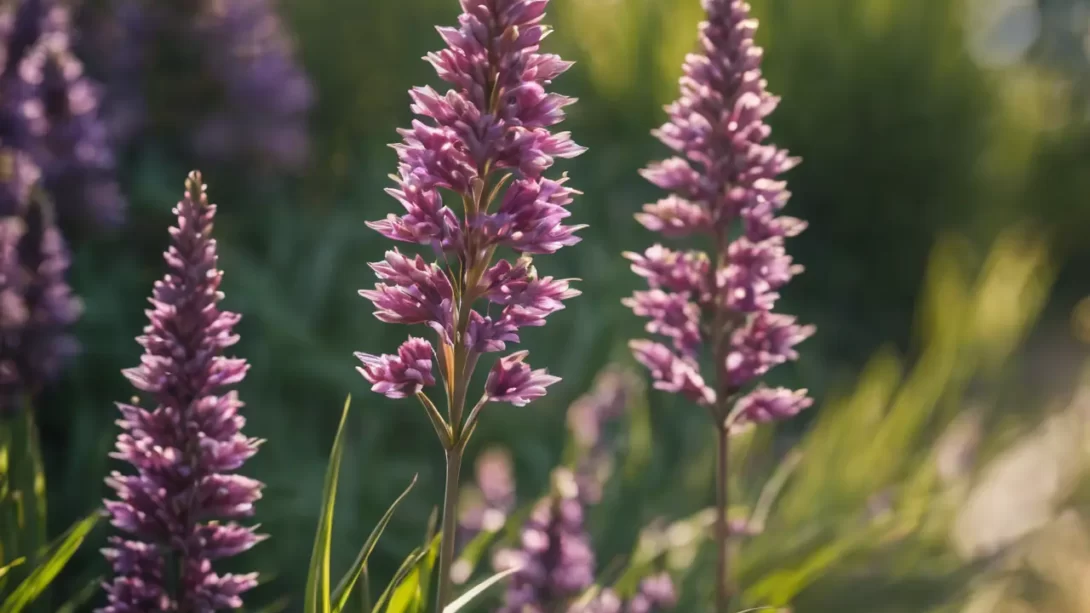Liriope, commonly known as monkey grass or lilyturf, is a popular choice in landscaping for its lush, grass-like appearance and low maintenance requirements. However, for gardeners in areas with a significant deer population, an important question arises: is Liriope deer resistant? This article aims to explore the deer resistance of Liriope by examining its characteristics, gardener experiences, and expert opinions.
Liriope
Liriope is a perennial plant often used for ground cover, edging, or in rock gardens. It thrives in a variety of conditions, from full sun to shade, and is known for its hardiness. The most common types of Liriope are Liriope muscari and Liriope spicata, both prized for their attractive foliage and purple or white flower spikes. Its adaptability and visual appeal make it a popular choice, but its ability to withstand deer browsing is a crucial consideration for many gardeners.
Deer Resistance in Plants
Deer resistance in plants is a complex topic, influenced by a plant’s taste, texture, and nutritional value. Deer typically avoid plants that are poisonous, have strong scents, or are tough and fibrous. However, deer preferences can vary based on the availability of food sources, the time of year, and regional differences. It’s also worth noting that no plant is completely deer-proof. In situations where food is scarce, deer may feed on plants they usually avoid.
Liriope’s Deer Resistance
Regarding Liriope’s deer resistance, the evidence presents a mixed picture. Some horticulturalists suggest that Liriope is relatively unappealing to deer due to its fibrous texture and lack of nutritional value. However, others note that deer may browse on Liriope, particularly in areas where preferred food sources are limited. It seems that while Liriope may not be the first choice for deer, it’s not entirely resistant to deer damage.
Gardener Experiences with Liriope and Deer
Anecdotal evidence from gardeners offers varied experiences regarding Liriope and deer. In some gardens, Liriope appears to be left untouched, suggesting a level of deer resistance. However, in others, particularly in regions with high deer populations or limited food sources, Liriope has been subject to browsing. These mixed experiences highlight that deer resistance can be highly situational, influenced by factors such as local deer behavior, other available food, and the specific type of Liriope planted.
Enhancing Deer Resistance in the Garden
For gardeners concerned about deer, there are ways to enhance the deer resistance of Liriope and the garden as a whole. Companion planting can be effective, where Liriope is planted alongside plants known to be less palatable to deer, such as lavender or marigolds. Additionally, implementing physical barriers like fencing, or using deer repellents, can provide further protection for Liriope and other plants in the garden. Regularly changing repellents or scare tactics can also be effective, as deer can become accustomed to a single deterrent over time.
Alternative Deer-Resistant Plants
If deer browsing is a significant concern, gardeners might consider planting alternatives known for higher deer resistance. Plants like Russian sage, boxwood, and certain ornamental grasses often fare better against deer. These alternatives can fulfill a similar role in landscaping as Liriope, providing ground cover or border decoration, while offering an added level of security against deer damage.
Conclusion
The question of Liriope’s deer resistance does not have a straightforward answer. While some gardeners report that their Liriope plants remain unaffected by deer, others have experienced the opposite. This variability can be attributed to regional deer populations, availability of other food sources, and individual deer tastes. Liriope might offer some level of deer resistance due to its texture and composition, but it is not entirely deer-proof.
For those dealing with deer in their gardens, a multi-faceted approach is advisable. Companion planting with more deer-resistant species, employing physical barriers, and using repellents can all contribute to protecting Liriope and other more vulnerable plants. Additionally, considering alternative plants known for their deer resistance can be a prudent strategy for those in heavily populated deer areas.
Understanding local wildlife behavior and adapting gardening practices accordingly is essential for successful cultivation. In areas with prevalent deer populations, it’s beneficial to plan your garden with deer-resistant plants or be prepared to implement protective measures. While Liriope can be a part of such a garden, it should not be relied upon as the sole deterrent against deer.
In conclusion, Liriope can be a valuable addition to many gardens for its aesthetic appeal and hardiness. However, its potential as a deer-resistant plant should be considered with caution and supplemented with other deer-deterrent strategies for the best chance of success in deer-prone areas.




